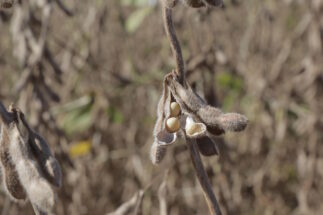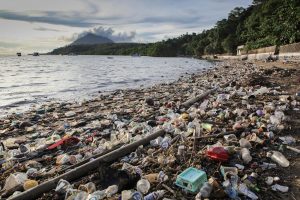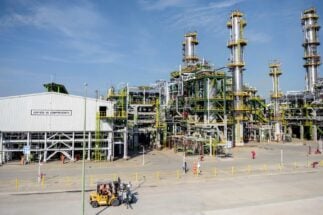Almost 5,000 kilometres long, the Paraná is one of the longest lowland rivers in the world. Yet it has less and less water, prompting uncertainty among experts as to the causes of a phenomenon that hampers many of the river’s biological and commercial functions.
Lower rainfall in the region has impacted the river’s flow, which has dropped to less than half of historical averages. This affects its navigability and concerns agribusiness since a large part of grain crop harvests from Argentina, southern Brazil and Paraguay are exported via the ports of Santa Fe, in northeast Argentina.
The low water level, considered the most severe in 50 years, cost exporters US$244 million in 2020 as vessels were unable to operate or load normally, according to the Rosario Stock Exchange. This has meant Argentine exporters are failing to capitalise on high global prices for agricultural commodities.
There is no certainty as to whether this water scarcity is temporary or marks the beginning of a new cycle of low water, as was witnessed last century. Nor is there unanimity about the causes, although experts have variously pointed to deforestation, damming in southern Brazil and climate change.
To complicate the situation further, the reduced river flow coincides with the end of a concession for dredging and signalling, processes necessary for its navigability. Belgian company Jan de Nul had the concession for 25 years and will now compete to retain it.
Paraná: New river or historical cycle?
The Paraná is much more than its main channel. It is a river system with a vast network of secondary channels, valleys and floodplains that are modified by the pulses of floods and low flows typical of this ecosystem.
“It is a giant whose extensive basin covers 2.6 million square kilometres, as much as the surface area of continental Argentina,” said Carlos Ramonell, a geologist specialising in the evolution of the fluvial landscape at the Universidad Nacional del Litoral.
17,000
cubic metres of water usually flow down the upper reaches of the Paraná every second
Its characteristic brown colour is due to the sediment it carries from the rivers of northwestern Argentina, such as the Bermejo. In addition to transporting these solids, an impressive 17,000 cubic metres of water flow per second, mainly via the upper reaches of the basin located in Brazil, and also the Paraguay River.
It was this flow of rainwater from the upper Paraná and the Paraguay that ceased in the southern hemisphere’s spring of 2019 due to unusually low rainfall, Ramonell explained.
However, Ramonell said that records for the 20th century show significant variation. While between 1930 and 1970 there was a period of “markedly” lower flow, from 1970 to 2000 they remained high.
Climate change, Ramonell says, “generates more doubt than certainty” about the reasons for the reduced levels.
“It is an exaggeration to link this drop to anthropogenic climate change. I think that this could displace other issues that do have a superlative impact on the river system, such as deforestation, canalisation and dams,” he added.
However, Juan Borus, a researcher at the National Water Institute, says that the causes “are of a clearly climatic order”. The rainfall pattern began to alter in mid-2019 and periods of scarce precipitation have become more frequent ever since, he said.
“The end of the drought and low water is not yet in sight. It is likely that the La Niña [climate pattern] will return later and we know that this does not favour the production of near-normal rainfall in our region, let alone that the rainfall will be significant enough to produce a noticeable recovery,” Borus says.
Low water and trade in the Paraná
The lower flow of water in the Paraná affects navigation, makes port manoeuvres more difficult and reduces the loading capacity of large ships, translating into higher costs.
Gustavo Idígoras, president of the Argentine Oilseed Industry Chamber (Ciara), said he was “very concerned” about the low water level, adding; “it has negative effects on navigability, which causes delays, ships get stuck and there are stoppages”.
Idígoras said some 4,500 large ships enter and leave the Paraná every year, “taking out” most of Argentina’s agricultural production. The low flow “puts the flow of exports at risk”, he said.
The energy and other sectors are also affected. 70% of the compressed natural gas imported by Argentina comes through the waterway. The automotive and steel industries also rely on it.
70%
of the natural gas Argentina imports travels down the waterway
Ciara is aware that a new climate scenario could affect how it does business.
“We see that there are cycles of drought returning with great force in South America. This is going to affect the region and works have to meet these needs while protecting environmental aspects… we stress the need for more in-depth and detailed studies,” Idígoras said.
Alfredo Sesé, an analyst at the Rosario Stock Exchange, said that the low flows “make it necessary to be more careful when loading, generating logistical cost overruns that are difficult to quantify”. The low flows also affect land-locked South American countries Paraguay and Bolivia, for whom the Paraná is the main channel for commercial river transit.
Commercial navigation is at its most intense during the harvest peak’s of the southern hemisphere’s autumn. Ships and barges require the greatest possible depths, as well as a generous channel width for safe navigation.
An export fluvial highway
Amid these challenges, Argentina is discussing a new concession for the management of the waterway, the commercial name given to the Paraná. Of its total length from the source in Brazil to its mouth in the Rio de la Plata, 3,500km of the Paraná’s river are managed waterways. The concession covers a 1,300 km stretch.

This part consists of a port hub made up of some 25 terminals owned by large multinationals that moved some 82 million tonnes of grain crops, flour and oils in 2019, making it “the most important agro-exporting port node in the world”, according to estimates by the Rosario Stock Exchange (BCR).
For Sesé, the waterway “plays a fundamental role in Argentina’s grain trade”, since 80% of grain crops, by-products and oil shipments travel along the waters of the Paraná. Paraguay and Bolivia also “bring their production down” to the major ports on barges.
The concession for the dredging and maintenance of the waterway interests five large groups, among them China’s Shanghai Dredging Company. Aside from current concessionaire Jan de Nul, the others are Belgium’s Dredging International and the Dutch Boskalis and Van Oord.
Covid-19, the death of Argentina’s transport minister and political disagreements over whether the waterway should be operated by a public or private company have led to Argentina extending the current concession until the end of July. However, there is no certainty over when and how the new tender will be launched. According to Idígoras, it won’t happen until April next year.
New investments should ensure the deepening of some sections to allow larger vessels to enter and leave with full loads. “The depth with normal water is 34 feet and the depth in critical passages is 36 feet. It is projected to reach 42 feet deep in specific areas,” Sesé said.
For Idigoras, having a “deeper waterway, with greater safety, depth, more roads and better signalling” will allow them to face the current climatic challenges that he believes “are here to stay”.








